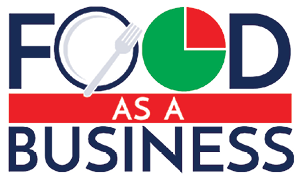Exploring Market Outlets: Opportunities and Considerations for Growers

Introduction
Having a marketing plan is important for agribusinesses of all sizes, especially for those looking to grow. A marketing strategy starts with understanding your products (the quality and value they offer), identifying which customers are most likely to buy them, and determining the best ways to market and promote your products. The plan should outline what you will sell, how you will sell it, and where you will sell it.
The “place” you choose to sell your products is crucial, as it affects how you can reach your target customers. This “place” is among the 4 Ps of marketing—product, price, place, and promotion—that form the foundation of a successful strategy. Selecting a market outlet involves determining where and when to sell, and the quantities required to meet demand in each market.
The goal of this publication is to discuss market outlet opportunities for growers and point out some considerations when evaluating various market outlets.
Why is market selection important? Being able to attract your target customers largely depends on using the right channels to reach them. It is important to find channels that align with both your product and the goals of your operation, desired operation size, sales, and profit objectives, and the time and labor you are able to invest. Entering and diversifying market channels can help you expand your customer base, manage market risk, and create opportunities for growth.
Market channels for agricultural products typically include:
- direct to consumer
- farmers markets
- community supported agriculture (CSA)
- farm stand or on-farm store
- online and digital platforms (e-commerce, social media sales)
- wholesale (intermediated)
- direct to institutions: restaurants, farm to school
- cooperatives and food hubs
- wholesalers, brokers, auctions, retail, processors
Considerations for Market Selection
Since market outlets vary, it is important to consider the following when selecting new markets:
Volume and Price
Wholesale (intermediated) markets can generally take larger volumes at once, as opposed to direct-to-consumer channels. However, food safety standards, product specifications, and quality requirements are stricter, and prices may be lower than when selling directly to consumers. Due to the difference in sales volume, your profit margin may vary across different outlets.
If you are expanding from farmers markets to larger markets such as restaurants, retail or wholesale operations, and institutions (e.g., cafeterias), you may not be able to charge the same price as when selling directly to consumers. Prices in these larger markets are typically lower due to the additional intermediaries between you and the consumer. For example, growers generally receive around 30% to 40% of the retail prices seen in grocery stores and supermarkets.
- wholesale: generally, can take larger volumes but offers lower prices, with less control over pricing
- direct to consumer: generally, involves lower volume sales but allows for higher prices and more control over the price you set
When selling directly to customers, you have the freedom to set your own prices. However, you have less control when selling to wholesale markets. To negotiate prices that cover your cost and generate profit, you need to research and stay informed about market prices. Also, knowing your production costs and keeping a budget for your operation and for each crop is crucial to making informed pricing decisions.
In addition to larger volumes, maintaining a consistent supply is important when working with intermediated markets, as they must meet ongoing customer demand. These markets often offer more predictable demand, typically with purchasing agreements that establish both volume and price in advance. While securing prices ahead of time can help mitigate the risk of price fluctuations, it also means that if market prices rise, you remain committed to the contracted price. In addition, adverse weather conditions or disease can reduce yields, posing a risk to fulfilling contractual obligations.
If you choose to work with buyers through contracts, it is essential to consider these risks and have a plan for managing potential shortfalls. Regardless of your market outlet, effective risk management and clear communication with buyers are key to maintaining good business relationships.
Given the nature of local markets and their demand capacity, scalability is another factor to consider. Some local markets (e.g., farmers markets) have limited reach and market potential. Thus, any growth plans should consider the capacity of local markets and how you may expand your reach.
Cost Considerations and Infrastructure Needs
Prices also vary across markets due to additional costs such as packaging, transportation, and marketing. For example, selling at a farmers market may involve farmers market fees, transportation to and from the market, and labor for setting up, selling, and packing your stand. When selling through intermediaries, you may still need to transport products to a warehouse or distribution center and sort and pack them according to the buyer’s quality specifications. Here are some costs to consider:
- marketing costs (e.g., farmers market fees, social media paid advertising)
- software fees (e.g., e-commerce platform)
- packaging and labeling
- transportation
- delivery costs
- cold storage
- certifications (e.g., food safety certifications such as Good Agricultural Practices, or GAP)
- liability insurance
To meet market requirements, growers may need to invest in infrastructure such as cold storage or refrigerated transportation to maintain product quality. In addition, when evaluating market opportunities, please consider that some buyers, such as supermarkets, may require food safety certifications and liability insurance.
Customer Base
Competition and customer turnout also impact the volume you can sell at different market outlets. For example, bad weather can reduce customer attendance at farmers markets when selling directly to consumers. In direct-to-consumer markets, building and maintaining a strong customer base is essential to sustaining sales, as you interact directly with customers. When selling to intermediaries, you will work with fewer buyers, resulting in less direct interaction with end consumers, but negotiations over price, quality, and volume will be harder.
Crop Diversity and Coordination
When selling through direct-to-consumer channels, greater variety is needed to enhance visual appeal and create something close to a one-stop shop experience at your farm store or farmers market stand.
In wholesale channels, the focus is typically on larger volumes of fewer crops. Having a planting and harvesting schedule is particularly important when working with wholesale, retail, or institutional buyers like schools. Production planning should consider crop varieties, planting and transplanting dates, dates to maturity, and harvest windows. Ensuring a consistent and reliable supply is important, as reliability is key to building strong relationships with buyers.
Quality Standards and Post-harvest Handling
Product specification and quality standards vary by market. In intermediated/wholesale markets, requirements typically include specific sizes, uniformity, and acceptable level of blemishes, which adds additional pressure to meet quality standards. Quality often needs to be consistent in these markets.
When selling to wholesale buyers, you will need to sort and reject products that do not meet quality specifications, and additional products may even be rejected upon delivery. The quality and uniformity required for wholesale will be like the retail quality you see on grocery store shelves. In direct-to-consumer outlets, freshness and flavor are important as consumers will remember the taste and quality of your products, and uniformity may not matter as much.
When working with different market outlets, consider how you will harvest and handle your crops (e.g., sorting, packaging, storing, and shipping products). For example, while you may not need to wash and individually wrap products for farmers markets, these may be needed when supplying retail or wholesale markets. If washing is required by the buyer, do you have the infrastructure to do so safely?
As additional quality and handling specifications may be required by buyers, it is important to assess whether you have the necessary infrastructure (storage, handling, cooling, cold storage, transportation, and logistics) to meet these needs. There are also labor considerations (e.g., time devoted to washing and packing for retail or wholesale markets versus time spent on sales and marketing for direct-to-consumer sales).
Promotion and Marketing Efforts
Direct-to-consumer channels require strong consumer engagement, as marketing in these markets is about building connections and sharing your story. The effectiveness of promotional efforts varies by market, so be sure to assess how well your marketing strategies align with your chosen sales channels. While selling directly allows you to communicate your farm’s story and the uniqueness of your products, maintaining product identity becomes more challenging when selling in bulk to wholesalers. If working with larger buyers, understanding their priorities—such as social responsibility or sustainability—can help you position your business and products as a way to support their corporate commitments (e.g., sourcing locally).
Certifications, Licenses, and Insurance
Once you know the size of your operation and where you will be selling your products, you need to apply for any necessary certifications, licenses, or insurance. Except for some stricter farmers markets, safety plans or certifications are not required for direct-to-consumer markets.
However, wholesale and retail channels have stricter requirements. These buyers often require food safety certifications (e.g., GAP certification), business licenses, packaging and labeling standards (e.g., lot codes, barcodes), and liability insurance. When starting conversations with potential buyers, ask about these requirements, including the level of insurance needed. Liability insurance, which differs from general farm liability insurance, is generally required by supermarkets, grocery stores, and restaurants to protect themselves in case of a foodborne illness associated with the products you supply to them.
Personal Goals and Farm Objectives
It is key to align your market selection with your lifestyle, your goals for your operation, and what you enjoy doing. For example, if you prefer not to interact directly with customers, direct-to-consumer marketing may not be the best outlet for you. In addition, labor availability should be a consideration. How much time do you want to spend on activities such as farming versus marketing? Understanding the labor needs for all tasks is essential.
Assessing Market Outlets
When selecting market channels, consider the pros and cons of each, including profitability, scalability, market reach, and labor requirements. Keep in mind that entering new markets and scaling up may require:
- changing the crops you grow and the number of crops you grow
- adopting specific harvest, postharvest handling, packaging, and (cold) storage standards
- changing your business operation
- adding more acreage
- hiring more labor
- buying more equipment/infrastructure
Making market visits and interviewing buyers or other farmers can help you better understand some markets and analyze their potential. Talk with potential buyers to assess market size, growth, and sale trends. The following are some questions or factors to consider:
- What products sell well?
- Are there enough producers offering a product?
- Is there any product missing that should be offered?
- Frequency of demand
- Crops, variety, and volume
- Expected prices
- Product specification
- Product differentiation: If your products are high quality, will you be able to differentiate your products from those supplied by others? For example, differentiation is more difficult for fresh products sold in bulk at grocery stores.
Market Channel Diversification
As the demand for local foods increases, there are opportunities to supply local products to restaurants, grocery stores, or even chain supermarkets. Many corporations have committed to sourcing a portion of their products locally, which presents an opportunity for producers to scale up while maintaining a local distribution.
Thus, a good strategy is to identify businesses that offer local products and develop direct partnerships. But remember that product availability and consistency are crucial. Be sure to understand buyers’ needs before planting or producing. Offering products over a longer season by extending the harvest window may help ensure a lasting relationship with buyers who may otherwise need to seek other suppliers.
Combining direct-to-consumer channels with other market channels—such as foodservice, institutions, and retail—can be an effective strategy for reducing risk. Starting with direct-to-consumer sales allows you to establish your business and customer base while providing valuable market feedback. As your operation grows, you can gradually explore wholesale opportunities, building relationships with intermediary buyers and diversifying your revenue streams.
You can also tailor products for different markets by matching quality standards and shelf life. For example, imperfect products can be sold at farmers markets but may be rejected by wholesale or retail buyers. Working across various markets can help increase cash flow and production scale while managing market risks, as you do not solely rely on one outlet.
.png)
This work is supported by the Extension Risk Management Education Program, project award no. 2023-70027-40446, from the U.S. Department of Agriculture’s National Institute of Food and Agriculture.
Any opinions, findings, conclusions, or recommendations expressed in this publication are those of the author(s) and should not be construed to represent any official USDA or U.S. Government determination or policy.
Publication 4116 (POD-05-25)
By Elizabeth Canales, PhD, Associate Professor, Agricultural Economics, Courtney Crist, PhD, Associate Extension Professor, Biochemistry, Nutrition, and Health Promotion, Rachael Carter, PhD, Extension Specialist II, Center for Government and Community Development, and Lauren Colby Nickels, PhD, Extension Specialist I, Center for Government and Community Development.
The Mississippi State University Extension Service is working to ensure all web content is accessible to all users. If you need assistance accessing any of our content, please email the webteam or call 662-325-2262.










